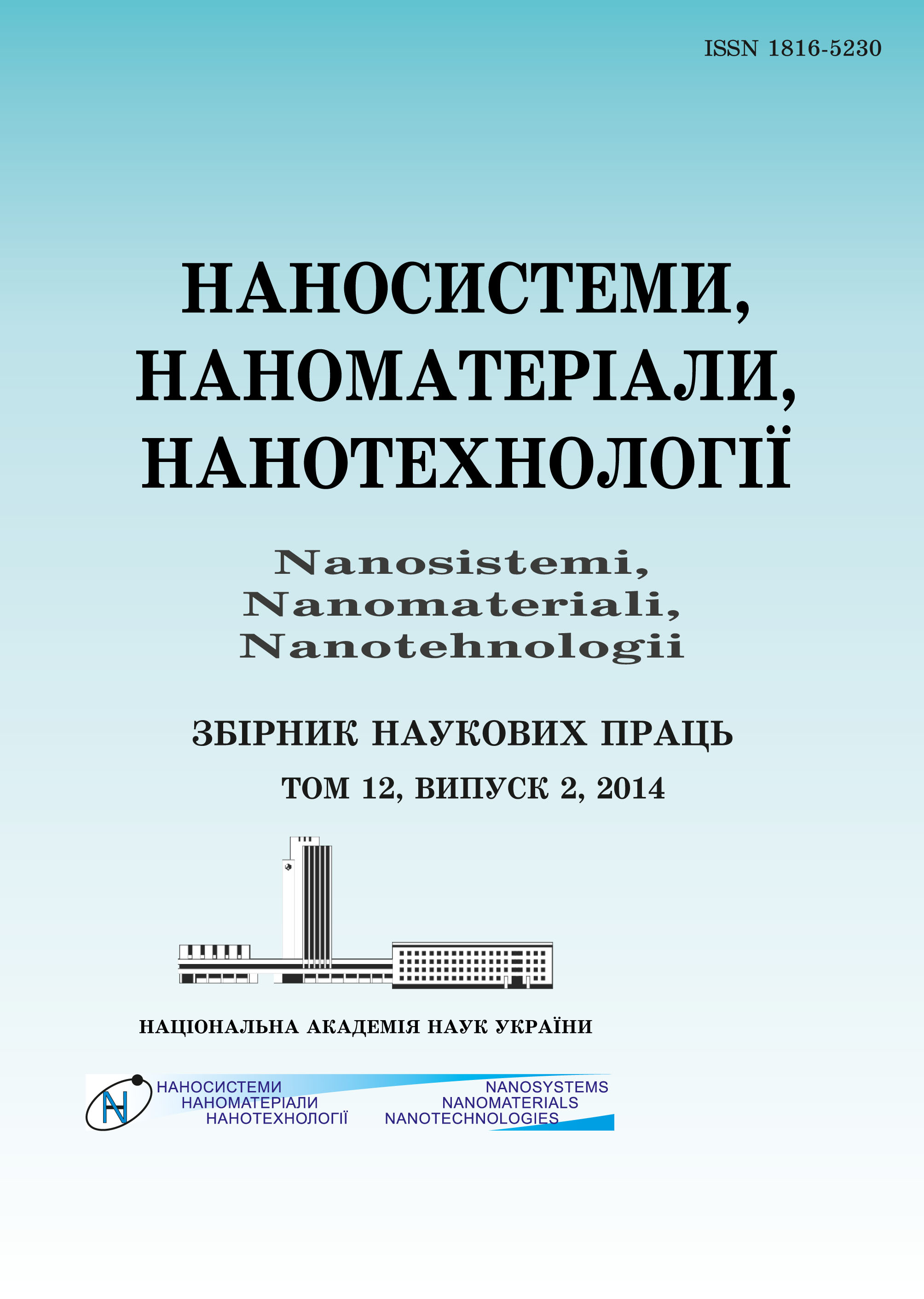|
|
|||||||||
 |
Year 2017, Volume 15, Issue 1 |
|
|||||||
|
|||||||||
Âûïóñêè/2017/òîì 15 /âûïóñê 1 |
A. P. Bakhtinov, V. M. Vodopyanov, Z. D. Kovalyuk, V. V. Netyaga, and I. G. Tkachuk
«New Nanocomposite Ferroelectric Materials—Layered Crystals of n-InSe<RbNO3> and p-GaSe<RbNO3>»
083–090 (2017)
PACS numbers: 62.23.Pq, 68.35.Ct, 68.37.Ps, 71.20.Tx, 77.84.Lf, 81.16.Be
In this work, a new nanocomposite—layered ferroelectric crystal is fabricated. As ionic salt, rubidium nitrate is used. Rubidium nitrate has the highest ionic conductivity of nitrates. Therefore, using this material with a relatively low melting point, nanocomposite materials can be fabricated at various temperatures and, examining their electrical properties, it is possible to determine the contribution of ionic conductivity of nanoscale particles with vertical dimensions of the order of Van der Waals gap width in the overall conductivity of a structure. Study of the surface morphology of nanocomposite-materials’ samples is carried out using an atomic force microscope (AFM) Nanoscope III a DimensionTM 3000 (Digital Instruments).
Key words: nitrate rubidium, layered crystal, ferroelectric, indium selenide, gallium selenide.
https://doi.org/10.15407/nnn.15.01.0083
REFERENCES
1. N. F. Uvarov, J. Solid State Electrochem., CV, No. 11: 367 (2011).
2. A. I. Dmitriev, V. V. Vishnyak, G. V. Lashkaryov et al., Fiz. Tverd. Tela, 53, No. 3: 579 (2011) (in Russian).
3. A. P. Bakhtinov, V. N. Vodopyanov, Z. R. Kudrynskyi et al., Phys. Status Solidi A, 211, No. 2: 342 (2014). https://doi.org/10.1002/pssa.201330081
4. A. P. Bakhtinov, V. N. Vodopyanov, Z. R. Kudrynskyi et al., Solid State Ionics, 273, No. 5: 59 (2015). https://doi.org/10.1016/j.ssi.2014.10.018
|
©2003—2021 NANOSISTEMI, NANOMATERIALI, NANOTEHNOLOGII G. V. Kurdyumov Institute for Metal Physics of the National Academy of Sciences of Ukraine.
E-mail: tatar@imp.kiev.ua Phones and address of the editorial office About the collection User agreement |